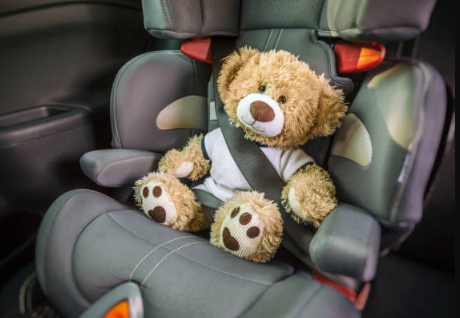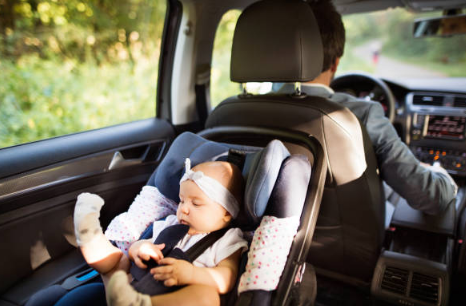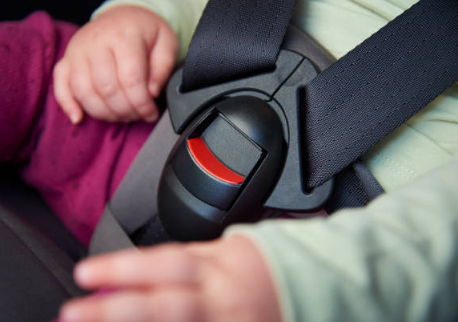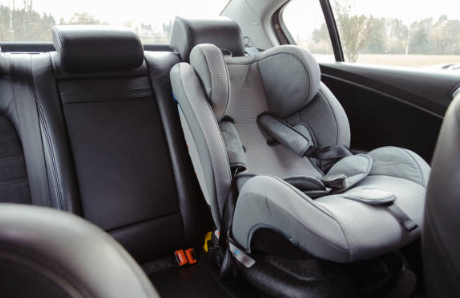Car seats are one of the most important safety devices you’ll ever use, so should even sleep-deprived parents be easy to install? Unfortunately, many parents don’t realize they’re making dangerous mistakes.

“Despite the design improvements, parents still find car seats very confusing,” said Benjamin Hoffman, M.D., a pediatrician and certified child passenger safety technician. “I checked more than 4000 seats and only 13 were installed correctly.”
When it comes to car seats, making sure every detail is correct. You have to know exactly when your child will no longer fit their seat, buy a new seat that fits them perfectly (and get to grips with a new set of installation guidelines), place the straps just right, and so on. It’s enough to make you think you need a Ph.D. in engineering to figure it all out.
The good news is that car seats are very effective. When you use it correctly, you can be confident that your child is likely to survive a crash with little to no injury. Read on to find out if you’ve made these car seat safety mistakes and correct them right away.
The Car Seats in the Car Are Too Loose
Researchers found that in the U.S., 49-95% of people abuse child restraint devices in their cars, resulting in reduced effectiveness of car seats. Loose installation is one of the most common misuses.
In a collision, a child sitting in a loose seat may hit the back of the front seat, causing serious facial or head injury. Therefore, ensuring that your car seat is completely comfortable is one of the most important car seat safety considerations.
Test this car seat safety bug
Grasp the bottom of the car seat with both hands. When pulled on the belt path, the car seat should not move more than 1 inch from side to side or back to back. If you can move it more than an inch, it’s not tight enough.
Fix this car seat safety bug
Read the section on car seat installation in the instruction manual and vehicle owner’s manual. Each car seat needs to be installed using a LATCH (Child Anchor and Tether) system or a locking harness to secure it in place.
Many cars are equipped with the LATCH system. It is a connection system that can be used to connect car seats using the lower anchor instead of a seat belt. Many people find these easier to use than seat belts. It is also possible to use both at the same time.
If you’re using a seat belt to install a car seat, pull the seat belt as tight as possible by placing your knees on the seat and putting all your weight in it (using your arms as a baby seat). Then, fasten your seatbelt – a step that many parents overlook.
The Child’s Seat Belt Is Too Loose
Stephanie Tombrello, executive director of SafetyBeltSafe USA in Torrance, Calif., said children with loose seat belts can easily slip out of their seats in the event of a collision. If they hit a part of the interior of the car or other passengers, they could be seriously injured. The worst-case scenario is for the child to be completely ejected out of the car.
Test this car seat safety bug
Tom Brello says that if you can still use your fingers to grip the fabric of the seat belt after securing your child to the car seat, the seat belt is too loose.
Fix this car seat safety bug
Tighten your seat belt. Keep in mind that the strap should fit snugly and have no slack.

Your Baby Is Facing Forward Too Fast
The bones that protect the baby’s spinal cord are still being formed. When a child is facing backwards, their back (the strongest part of the body) is better able to absorb the tremendous force generated by the impact.
When facing forward, the baby’s relatively heavy head may catapult forward, causing its underdeveloped spine to expose the spinal cord, putting them at risk of paralysis or death.
According to the Centers for Disease Control and Prevention (CDC), children should sit in a rear-facing seat for as long as possible. This is usually from birth to 2 to 4 years old, depending on when the child reaches the maximum height and weight limit for the seat.
Test this car seat safety bug
Experts used to advise children to maintain a backward-facing position until the age of 2. However, since the performance of a car seat depends on the size, these recommendations have changed to reflect the child’s height and weight.
Therefore, the best way to test for this error is to read your car seat owner’s manual (or find the sticker on the seat) to determine if they still meet the height and weight requirements of the seat.
Fix this car seat safety bug
Follow the rules. Keep your baby facing back until the maximum height or weight limit of the seat is reached.
Your Rear-Facing Car Seat Is Not Angled Correctly
A baby’s airway is very narrow, about the diameter of a soda straw. If you tilt your rear-facing seat forward too much, your baby’s overweight head may tip forward, cutting off their airways and preventing them from breathing.
Therefore, it is important to install the car seat base at the correct angle of inclination to ensure that the baby’s airway remains clear. Luckily, many car seats have built-in angle indicators to help you out.
Test this car seat safety bug
Make sure the seat angle is correct so that your child’s head doesn’t lean forward. Check your car seat manual to understand the correct angle of the seat and how to adjust the angle if needed. According to the American Academy of Pediatrics (AAP), all rear-facing seats should be equipped with a built-in angle indicator or adjuster.
Fix this car seat safety bug
While most rear vehicle seats are tilted towards the rear of the car for the comfort of adult passengers, safety seats are designed to be mounted on a flat surface. However, many car seats come with adjustable bases to overcome this problem.
If the seat doesn’t have an adjustable base, do what a technician did during a car seat inspection:
Place the chopped pool towel under the area where the baby’s feet are resting. Towels that are tightly rolled up are also effective.

The Seat Belt Chest Clip Is in the Wrong Position
When the seat belt chest clip is in the wrong position, the seat belt can easily slip off the child’s shoulder, putting the child at risk of ejecting from the seat in a crash.
Test this car seat safety bug
The seat belt chest clip should be located in the armpit in the center of the chest. This clip ensures that the harness is in the correct position.
Fix this car seat safety bug
Parents often move the clamps when pulling their children up from their seats. So, every time you fasten your seatbelt, check the position of the clips.
The Harness Is in the Wrong Slot
When the child is facing forward, the seat belt in the lower slot may break through the seat during a collision. A good rule is to check the position of the seat belt whenever the seat is moved or adjusted.
Test this car seat safety bug
Most convertible car seats are designed with three sets of seat belt slots: the bottom two for the rear-facing position and the top one for the forward-facing position.
On most seats, once the seat is facing forward, only the topmost slot has the necessary additional reinforcement to ensure that the seat belt remains secure in the event of a crash. However, parents often turn the seat without adjusting the straps.
Fix this car seat safety bug
Move the shoulder strap to the slot at or above your child’s shoulder, or at or closest to your child’s shoulder (above or below, based on backward or forward-facing).
Check the instructions that came with your seat to make sure the shoulder straps are in the correct position. You may need to adjust the recline angle of the seat so that it is more upright in the car. Check the instructions to be sure.
You’re Not Using a Booster Seat
Using an adult harness alone does not properly restrain a child because it passes through the child’s body in the wrong place. The adult belt is high across the child’s abdomen, high over their shoulders, and sometimes even over their necks.
Children often move the shoulder straps behind them because it is uncomfortable. In a collision, a child who is too young to wear a seatbelt may suffer severe visceral injuries or head and spine injuries and may even be ejected.
On top of that, even if you use booster seats, because car seats are recommended based on size and not age, some children who graduate with booster seats may not be able to use them properly. The study found that some children who were physically fit for booster seats were not yet mature enough to use them. This means that it may be wise to have younger children stay in the harness seat longer.
Test this car seat safety bug
The AAP recommends that when a child exceeds the limits of a forward-facing car seat (many seats can accommodate children weighing 65 pounds or more), they should use the seat belt to position the booster seat until the vehicle’s knee and shoulder belts fit properly. This usually happens when they are at least 4 feet 9 inches tall and 8 to 12 years old.
Fix this car seat safety bug
Go out and get your child a booster seat today! If your child is too young to use a booster seat properly (e.g., they pull their arms out of their harness or twist out of their belt), consider purchasing a harness seat that can accommodate older kids (some forward-facing models can reach heights of 70-90 pounds).
Reminder: Children under the age of 13 should always sit in the back seat and never sit in the front seat.

Your Car Seat Has Been Recalled
There are several reasons for a car seat recall, including faulty latches and flammable seat fabrics. While some of the recalled seats do not pose a fatal hazard, many do. The wrong buckle can easily lead to disaster.
Test this car seat safety bug
Millions of car seats have been recalled over the years, but many have not been repaired or replaced. Please check your seat against the list of recalled seats maintained by the National Highway Traffic Safety Administration (NHTSA). You need to know the model name, model number, and date of manufacture of the car seat, all of which are on the seat.
Fix this car seat safety bug
If you find that your seat has been recalled, please contact the manufacturer for further instructions. Never buy a car seat at a garage auction or second-hand store as it may have been recalled or collided.
Your Child Sleeps in a Car Seat Outside the Car
When a child is sleeping in a car seat outside the car, the car seat may fall or flip over. The straps can also lead to fatal strangulation.
A 2015 study investigated the dangers of sitting and carrying devices in children under 2 years of age. Researchers have found that the main causes of death in car seats are restraint belt strangulation and postural asphyxiation. In 89% of cases, deaths occur outside the vehicle.
Test this car seat safety bug
Testing for this car seat safety bug is easy. Although your infant car seat can double as a carrier, keep in mind that it is not suitable for use outside of transferring a child from the car to a nearby location. And none of them are intended to be used as sleeping devices.
A May 2019 study by Pediatrics found that 62.9% of infant deaths that occur in a seat occur in a car seat. More than half of all car seat fatalities occur in supervised homes. When a car seat is used in a car, death occurs in less than 10% of cases.
Fix this car seat safety bug
Use car seats only in the car. If your child falls asleep in a car seat while driving, lie them on their back on a flat surface when they get home.
